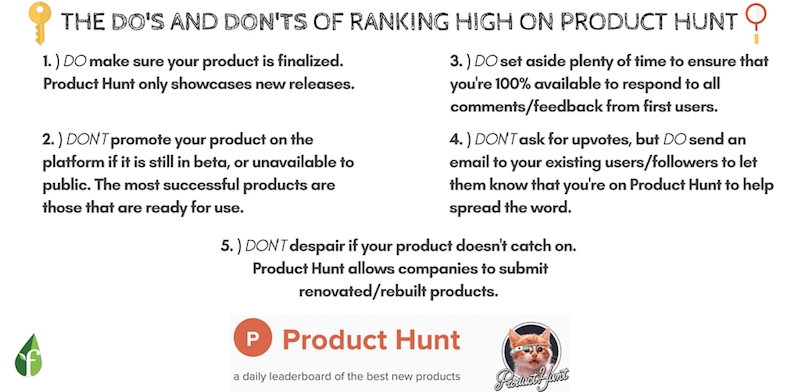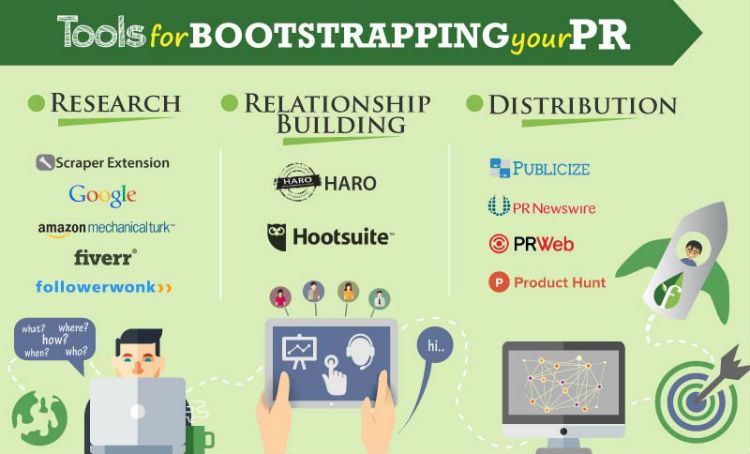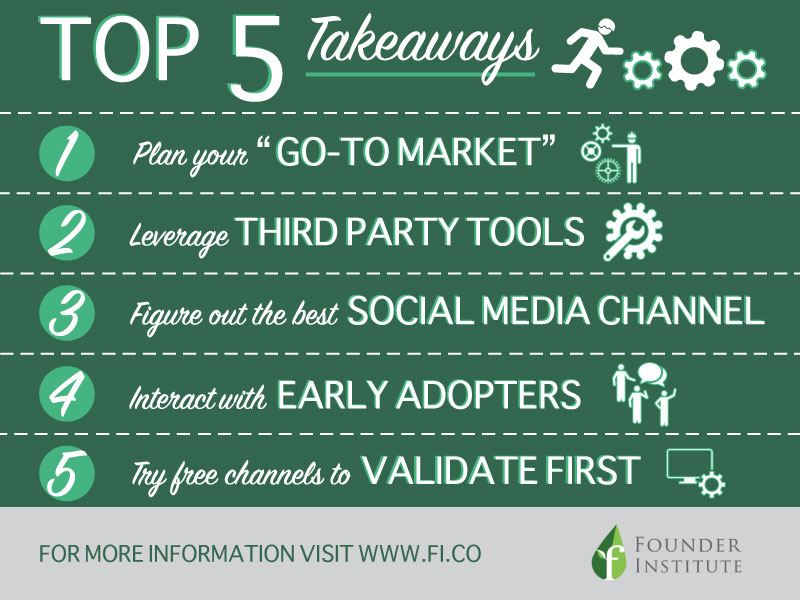
Launching your first product is an exciting and stressful time for every startup, as the initial success of a company’s offering often determines how well the product will do in the long run. And with the large number of overnight success stories out there, the pressure to release a hot product right out of the gate is higher than ever.
Luckily, if you’re getting ready to launch your product and want to learn how to get the most from your release, we’ve got a guide to help you get started, filled with insights from someone who managed to attract over ten thousand users in just four weeks of launching their product - WITHOUT a marketing plan or budget. That someone is Manoj Khani, a Graduate of the Los Angeles Founder Institute and the Founder of the photo management app PhotoPanda.
- - -
Like most first time entrepreneurs, when we first started building PhotoPanda, I only had a rough idea of how we were going to get in front of users, but not a tested “Go To Market” plan. We were busy building the product with a small team that consisted of a Designer, Developer, and a Product Manager, but not a marketer. Also, our assumptions about who our best users were, haven’t been validated in any statically significant environments.
Yet, despite a lack of early planning and our decision to not invest in paid acquisition until we found out user lifetime value data; we were able to acquire over 10,000 passionate users within the first 4 weeks of launch.
So how did we grow 100x from our first one hundred beta testers while only spending <$100 and what did we learn?
1. Promote Your Company on Product Hunt
We asked one of our mentors to submit us to Product Hunt. Product Hunt is great for spreading the word among early adopters, especially if you have a consumer product. Its users will not only try your product, but also give you valuable feedback. Various tech journalists also frequent the site daily looking for new products to write about.
Here are a few points to keep in mind when promoting your product on Product Hunt:
-
Apart from finding someone who has submission rights, you will need to make sure your product looks ready and delivers value. A rickety beta will cost you the opportunity inherent in the launch of a brand new product, as the site showcases new releases only.
-
Also, you will need to make sure that when your product does go live on the site, you are 100% available to respond to all comments and feedback from its users.
-
Being on time zone 12 hours ahead when PhotoPanda went live, my ability to not rapidly get back to the commenters limited the amount of upvotes we received.

2. Reach Out to Bloggers and Journalists
Product reviews by bloggers/journalists are a win-win, as it means they do the work for getting you in front of interested eyeballs and in return their users benefit from it. Getting a positive product review from a trusted author is far more effective than any sort of paid advertising to that user base. Bloggers know their readers and will write only when the product is relevant and useful to their readers.
Below are some tips to keep in mind to utilize bloggers and journalists to expand your user base:
-
Reach out to as many writers as possible. We submitted PhotoPanda to the App Store, and immediately started reaching out to tech journalists and mommy bloggers. We had put together a contact list of 100+ journalists and reached out individually to all of them. I followed them on Twitter and started engaging with their posts.
-
Don’t give up. Unless you have an existing relationship or the blogger wants to write about that space, the conversion is low here. So don’t get demoralized; it is still better than nothing! In the second week of doing this and leveraging the Product Hunt announcement, we got our first review published in AppAdvice. The online tech magazine has a significant audience and soon after, CultOfMac included us in their “Apps of the Week” section. These positive articles propelled us towards our first thousand users.
-
Go international. Seeing this traction domestically, we started reaching out to bloggers internationally in the United Kingdom, Japan, and Southeast Asia – places where we expected our core demography to be. After many translated emails (we used Gengo for professional translations), we received reviews in two major Japanese outlets techjo.jp, appps.jp, followed by stories in Indonesia and Hong Kong. This brought us our next several thousand users in a matter of days.

3. Submit to Product Review Sites
There are quite a few sites that will help you submit your new product to many technology websites at once. After trying a few, I ended up using StartupLister, which helped us submit to over 40 other websites like Mashable, The Verge etc., for $79 only. Not only did this save us valuable time in the race to get the word out, we also got accepted by many upcoming sites like BetaBound, Startup blink and Killer Startups, that we would not have otherwise known of.
A word of caution: Some sites will ask you to pay to publish your review faster. I would advise against this. The best reviews are ones in which the blogger/journalists loved your product or found it relevant and wanted to write about it to their users can benefit from it.

4. Boost Your Social Media Presence
Since PhotoPanda is in the photos space, Instagram was the obvious choice for social media. We were frustrated with the amount of effort it took to grow the audience, so we used an automation tool (Boostagram) to help us get up to a 1,000 new followers per month. This helped us gain a presence on social media and an early communication outlet for our users. However, converting social media to paying users is a separate challenge and the topic of another post.
In addition to Boostagram, check out the following tools to help you get the most out of your social media accounts:
-
EveryPost enables you to curate your company’s visual content, schedule customized posts, and share content to all major social media platforms, including Facebook, Twitter, Google+, LinkedIn, Pinterest, and Tumblr.
-
Bit.ly lets you shorten your url and tracks clicks to help you monitor how well your content is converting traffic to your website.
-
Hootsuite, a social media management tool that lets you schedule and analyze your social media marketing campaigns.
-
Crowd Booster optimizes your social media marketing decisions by automatically sending you analytics on a regular basis.
5. Promote Your Product on TV
The year prior to going completely digital, we had been on a Fox morning show on Cyber Monday. The audience of the morning show, airing in Santa Barbara, was not quite what we were targeting, so while it helped from a press perspective, it did not have any real impact on sales.
If you plan on promoting your product on a TV show, keep the following points in mind:
-
Remember that appearing on television won’t guarantee a sudden surge in users, so make sure you’re targeting the right audience.
-
The smaller and more localized the TV program, the smaller and more localized your audience will be.
-
If you are able to promote your product on television, plan a major social media campaign before, during, and after your appearance.
- In the event that your TV show appearance does reach a wide audience, block off the next few days after the program airs to ensure you’re prepared for increased volume.
6. Hire a Growth Hacker
With the number of early stage startups ballooning, there is a surge of “growth” companies and growth hackers or social engineers. Most of these cost money and need several weeks or months before building any real traction. Prior to hiring such help, you will need to understand whether they specialize in the audience you are targeting and how exactly they will help.
In the Entrepreneur article, “The Entrepreneur's Guide to Hiring a Kickass Growth Hacker”, Neil Patel outlines several important tips to consider before bringing on a growth hacker. Here are a few of the highlights below:
-
Remember that growth hacking is more of a mindset than a set of methods or skills, as it requires more creative thinking than technical methods.
-
Look for a strategist rather than a technician. Growth hackers are less concerned with technical details than they are with the way in which the details work together.
-
Don’t hire a growth hacker; instead look for a content marketer with a growth hacker mindset. “Growth Hacker” isn’t an official title, so hire someone with a mix of old and new strategies.
-
Look for someone with experience, someone who has successfully hacked their way to growth at previous companies, as they will be better equipped to identify your needs.
Quick Takeaways
-
Plan your “go-to market” before starting to build the product. Test it during development, and have an audience that can benefit from your product, ready to try your beta/MVP.
-
Leverage third party tools to submit to as many early adopters sites as possible. Follow up at least a few times with the ones that are relevant to your product/vertical.
-
Figure out the best social media channel and use automation tools to build your following faster and more effectively.
-
Be hyperactive when interacting with early adopters and responding to their feedback, reviews, and comments to establish your credibility.
-
Try free channels to validate your core users and product assumptions first before investing significantly in paid channels or hiring outside companies.

A lot of effort goes into building a good product. Almost similar effort, if not more, is needed to get it out in front of the audience that will benefit from it the most.
Trying multiple routes to understand and acquire these users before investing in paid channels is a scrappy way for refining your product quickly. It will also grease the wheels of any inherent viral components, setting you up for more organic growth and accelerated learnings.
Good luck!
PhotoPanda is an app that helps you take control of your photos on your phone. For example, it separates out your good photos from the rest, shows you hidden gems, and highlights stuff you can remove. Download the app from the iOS app store today.



